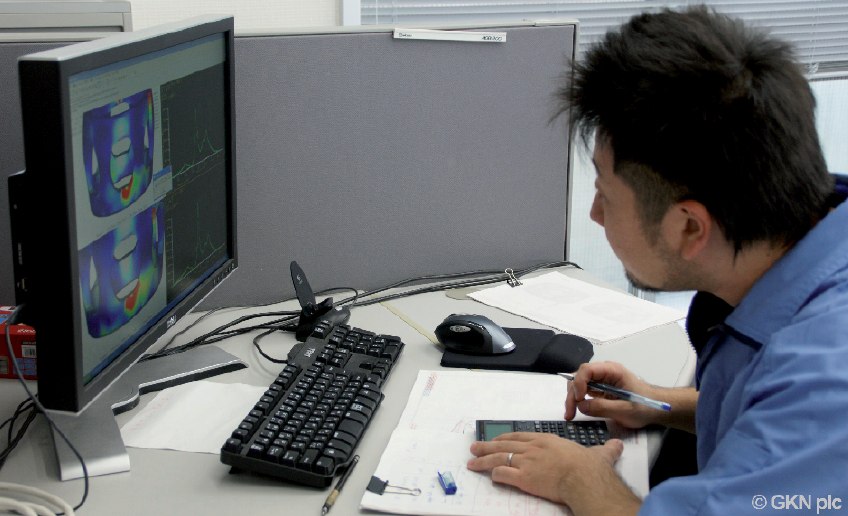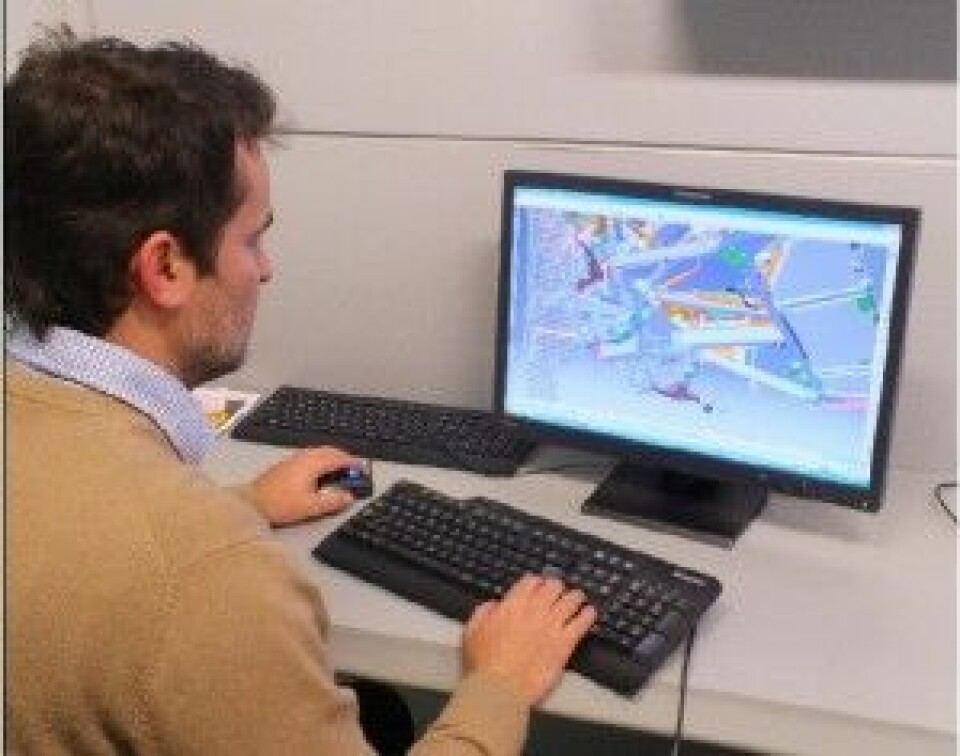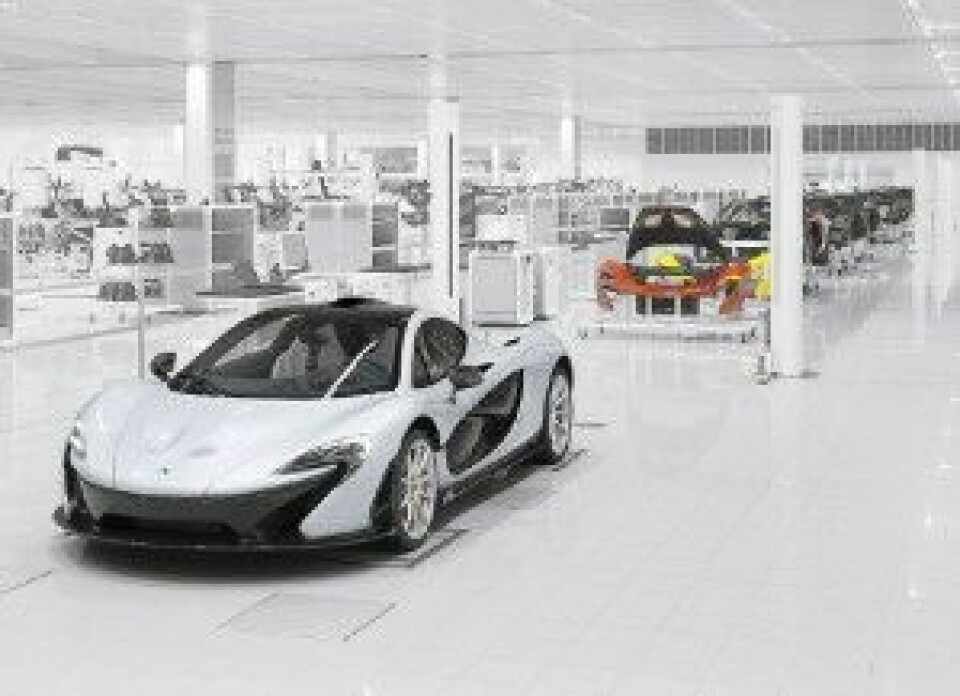Designs on digital efficiency
AMS hears from GKN Driveline and McLaren Automotive about recent upgrades to their modelling software
 GKN Driveline, global supplier of automotive driveline systems and solutions, has an OEM customer base which includes Ford, General Motors, Volkswagen, Fiat-Chrysler, Renault, Nissan, Toyota and Jaguar Land Rover. As such, the technologies the company uses to generate and manage design information, and the effectiveness with which it exploits them, are of fundamental importance to its business success.
GKN Driveline, global supplier of automotive driveline systems and solutions, has an OEM customer base which includes Ford, General Motors, Volkswagen, Fiat-Chrysler, Renault, Nissan, Toyota and Jaguar Land Rover. As such, the technologies the company uses to generate and manage design information, and the effectiveness with which it exploits them, are of fundamental importance to its business success.
Since the beginning of 2013, GKN Driveline has primarily relied upon Creo 2.0 3D CAD modelling and the Windchill 10.1 product lifecycle management (PLM) systems from Parametric Technology Corporation (PTC). According to Steve Minter, global engineering IS/IT director for GKN Driveline, the company now has some 350 engineers using Creo around the world and over 2,000 personnel interacting with the Windchill system.
Last year did not mark the start of GKN Driveline’s use of PTC technology, as the company has been using the software since the mid-1990s, but 2013 involved an upgrade from PTC’s earlier Pro/Engineer modelling software system and the 9.0 version of the Windchill package. All of GKN Driveline’s design operations are now linked to a single central Windchill server in Italy via a high-performance telecommunications network using multiprotocol label switching (MPLS) technology.
The company is already exploiting the potential which the latest systems offer to enhance the efficiency and effectiveness of its procedures, with scope for a quite radical restructuring of its internal design-to-manufacturing communications in the long term.
But when it comes to core modelling capabilities – the ability to construct and manipulate complex product geometries – choice of CAD software is not a key product differentiator for GKN Driveline, according to Minter. “There are really three major systems out there – PTC Creo, Dassault Systemes Catia and Siemens PLM NX – and they could all satisfy our modelling requirements,” he states.
Thomas Niebeling, manager IS/IT, GKN Driveline, explains: “Our products are not of extreme complexity; we probably only use 10% of the software’s modelling capabilities.”
Yet a major plus point of the Creo software as far as GKN Driveline is concerned is its support for operation in a multi-CAD environment, in which it has to deal with modelling data in more than just the native format of its own system.
Managing multiple data types
According to Minter, the company has 125 ‘seats’ of the Catia software spread around the 17 locations worldwide at which it carries out engineering design work. Two of these, in Sweden and Japan, use only the Catia software. Minter says the reason is less the use of Catia as a design tool and more for the sake of communication with customers that use the system as their own primary in-house design system and require the Catia format to be the medium for the communication of CAD data.
Nevertheless, Niebeling says one of the key capabilities promised by the Creo software compared with its Pro/Engineer predecessor is the enhanced ability to let GKN Driveline receive and work with CAD modelling data in other CAD formats. At the moment, CAD data sent into the company in a non-Creo format is translated into a usable form using the STEP neutral format standard as an intermediary. However, a promised upgrade in the yet-to-be-released Version 3.0 of the Creo software will ensure that this capability to combine different CAD environments in the same assembly will be “automated and hidden from the user”.
This will provide a seamless procedure for customers to send in ‘packaging’ information, most obviously the design data GKN Driveline needs about the geometry of the surrounding structure of the vehicle and connection points for the systems it will provide, direct from their own CAD. GKN Driveline’s design engineers can then add their contribution to the growing assembly using the Creo software.
In terms of actual product design operations, GKN Driveline’s usual procedure is for primary responsibility to be centralised and for design data to be shared with other sites as required to support globally dispersed manufacturing of standardised products. The Windchill network is obviously vital to ensuring that the information involved is always relevant and up to date, but the company is also exploiting another, potentially highly significant capability provided by the Creo system.
Using Creo beyond design teams
The CreoView MCAD option allows non-design staff to access design data for review and comment purposes, but crucially, without the ability to access and alter the data in any way. Minter says that for every individual using the main Creo system for design work, as many as five more are viewing the data to provide input and feedback to the design process, as well as for manufacturing purposes. Typically, those other individuals may be in areas such as manufacturing, quality control or purchasing, but in practice there is no limit to where they may be or their numbers.
As Niebeling points out, the use of CreoView does not require any licences from PTC, so there are no cost constraints for GKN Driveline in determining the extent to which it will use the capability. Moreover, the procedure works both ways and the combination of Windchill and CreoView means that everyone outside the immediate design arena, who needs to be kept up to date with proposed design changes, can be informed as soon as these are made.
Focusing on model-based definitions
This use of CreoView as a pervasive tool throughout the company can be regarded as a harbinger of a much more radical approach to 3D modelling data that is already being actively considered, though there is no timetable for its adoption. [sam_ad id=17 codes='true']
The concept is explained by Minter, who says that GKN Driveline is now beginning to think of how it could centre all of its operations on “model-based definitions”; in other words, 3D data derived from the product design database. He says this would mean the complete abolition of 2D data – already obsolete as a design format – as a means of communicating product-related information within the organisation. Manufacturing operations in this scenario might then receive all dimension and tolerance data for a part electronically as a 3D model edited to provide the precise information required for the task involved.
The concept has already been explored. Minter confirms that GKN Driveline ran a small pilot project a couple of years ago and that, while efforts have been discontinued for the moment, he expects full implementation to become a reality “in the medium to long term”. At present, he says the necessary technology is “not quite there”.
By contrast, Minter says that “folding up a paper drawing and carrying it onto the shopfloor” remains a simple, reliable procedure. For that reason, he adds, the real barrier to overcome will ultimately be organisational and not technical. “You will have to get people to believe in it,” he states. Nevertheless, the model-based approach holds out the promise of transmitting a “much richer” stream of information than a 2D hardcopy format could ever achieve – not least because it will always be based on the most up-to-date modelling data, with no danger of it becoming distorted through any form of misinterpretation.
That prospect is one of two ways in which GKN Driveline’s use of CAD modelling data might impact on its operations at a fundamental level, according to Minter. The other would be to effect a drastic reduction in its need for prototype manufacturing. “We have a goal to get as close as possible to ‘right first time’ for our engineering capability,” he states. “We want to get to a point where we can be absolutely certain that our first prototype will meet all the targets, but we also want significantly to reduce our need for physical testing.” That will inevitably involve an increase in the use of software-based simulation techniques using modelling data.
But in both instances the same principle holds. The company’s use of 3D modelling and associated data management systems is not narrowly focused on creating specific product attributes but is instead directed towards achieving strategic objectives related to business performance.

Another company engaged on an upgrade to its CAD modelling software system is high-performance car manufacturer McLaren Automotive, based in Woking in the UK. As design office manager Graeme Williams confirms, this is the company’s second such exercise in the space of four years. The first took place late in the last decade and saw McLaren move from the Catia V4 software system on Unix hardware to the V5 version on PCs. The new one will see McLaren adopt the latest V6 system.
Similar to GKN Driveline, this latest move is not primarily concerned with enhancing modelling capabilities but is a crucial enabling factor in achieving a fundamental shift in the company’s business strategy.
Upgrading strategy along with software
McLaren is intent on doubling its output of new vehicles so that from 2017 onwards it will be producing two new models a year. This means it will have to change from being the ‘single focus’ operation it was when Williams joined the company, just after the first upgrade, to an OEM capable of carrying out multiple design and manufacturing projects simultaneously.
According to Williams, the most important new capability the V6 software will bring is that of support for globally dispersed, collaborative design work. McLaren has formed an agreement with what he will only describe as “an organisation in India” to share design responsibility for new vehicle design projects. The significance of the software in this context is that it is specifically built to enable users to access a shared database and work together irrespective of their geographical location. In order to meet that new vehicle introduction target three years hence, the first relevant design work is scheduled to begin halfway through 2014.
This new move can be regarded as a continuation of a systematic reorganisation and upgrade of McLaren’s design processes that has been underway since Williams joined. He says that back then, the company lacked basic written “design standards” such as those governing approved ranges of fasteners and the reasons for their use in particular instances. Relevant standards were therefore produced and their implementation was further supported by the parallel deployment of the Microsoft SharePoint data management software system. This was to provide the operation with an effective form of ‘version control’ aimed at ensuring that “all the technical data associated with a drawing is correct”, as Williams puts it.
Now, though, the company’s design operations have come up against a more substantial challenge. Quite simply, states Williams, it has “run out of space” and does not have sufficient internal resources to support the planned expansion.
Maintaining a design legacy
Williams explains that under the new system a core “concept team” of around 20 design staff at McLaren in Woking will lay out the intended new vehicle and also carry out sufficient analysis to ensure it is both “dynamically” and “financially” viable. But – and Williams indicates that this is a crucially important part of their remit – the team at McLaren will also have to determine the “carry-over content” from previous McLaren vehicles.
This is a relatively new concern for the company. By contrast, when the design work was being undertaken for the MP4-12C sports car launched in 2011, no such issues were involved because the previous vehicle to be wholly designed and made by the company had been the F1 supercar a decade earlier. Yet now, as the company gears up to produce new models on a much more regular basis, there is a conscious focus on ensuring that some essential corporate ‘DNA’ is carried forward to give the brand a distinct identity in the market.
Williams says that only then will the extra resource in India be brought into play to help progress the design through to completion. He is adamant that without the adoption of the V6 software this whole way of working would be impossible. The difference between V5 and V6 in this respect is, he says, like that “between night and day”. Quite simply, V6 “will make possible proper real-time collaborative working with a partner on the other side of the world”.

This ability to support a globally dispersed operation is not the only enhancement to the company’s design procedures the move will bring. According to Williams, it will also enable a major increase in the efficiency with which designers can manipulate design data. The V5 software does not allow the selection of a small part of the overall model to check its validity, for instance to detect potentially clashing parts, and requires users to “open up the whole car” – a procedure that can be particularly irksome when there are multiple vehicle variants involved.
The V6 version, however, will offer a “volume search capability” that will “allow designers to define a discrete area of a model so that they only need to access parts within or crossing that boundary”. The difference that capability will provide will be considerable. Williams states that a task that may currently take between 30 minutes to an hour will become a matter of “a few seconds”. Moreover, it is a capability that will change the nature of the designers’ responsibilities since they will be “empowered” to carry out a task that is presently devolved to a small, specialist team.
Williams admits that the volume search capability is an advantage that will not come all that easily because the basic formats in which the V5 and V6 versions of Catia store design data are not immediately compatible. Hence upgrading from one to the other will involve a data migration exercise in which only information that is identified as strictly necessary will be transferred from one to the other.
Managing data migration
Williams says the data migration will be a task requiring careful planning and management, but is confident that it can be carried out successfully. He envisages probably four such exercises, each involving the transfer of details for about 5,000 parts. There is, however, no danger of any data being lost because the existing V5 database will be maintained. “We will keep a V5 terminal in a corner, hopefully doing no more than gathering dust, as we do with V4 now,” he comments.
A related issue will be the import of design data from external suppliers, some of whom have devolved design responsibility for units for which McLaren itself does not maintain specialist internal expertise, such as headlights. V5 is currently used by about half of McLaren’s supplier base, says Williams, but given that V6 allows V5 users to “write to its database” he does not anticipate any insuperable problems.
Nonetheless, McLaren would certainly “not discourage” any of its suppliers from migrating to V6 themselves. Williams points out that this would enable the same degree of real-time collaboration, both for communication and editing of design information, that is the basis of the partnership with the organisation in India.
McLaren is intent on the upgrade of more than just its immediate design software system. As Williams explains, the move is part of a broader strategic reconfiguration of its resources that will see an in-house product data management (PDM) software replaced by the SAP enterprise resource planning (ERP) system. McLaren will also start to use the Delmia manufacturing simulation software from Dassault Systemes.
The current PDM software, Williams explains, was written to support a completely different business structure – the “single project” philosophy that McLaren is now endeavouring to break away from – and simply could not support with any acceptable degree of efficiency the “multi-project” company it is seeking to become.
Of all the benefits the Delmia software will bring, not least is that it will avoid the current requirement for virtual build exercises that take place as part of the overall design and development process to be carried out with ‘frozen’ CAD data – information which may already be out of date when the exercise takes place because of the need to collate it in advance. Instead, says Williams, they will be carried out with “live” information from the current CAD database.
McLaren intends that all parts of the company, from design to management and manufacturing, will have access to a common source of graphical information derived from a 3D modelling database. Not only will that support an ability to carry out parallel design projects, it will also enable the company to achieve a significant compression of total development timescales. As Williams confirms: “We are looking to eliminate a whole prototype stage and should be able to knock six to nine months off the three years a project takes now.”